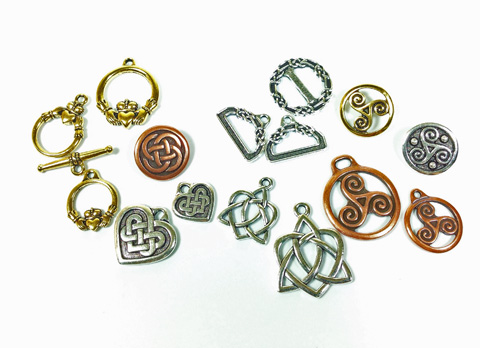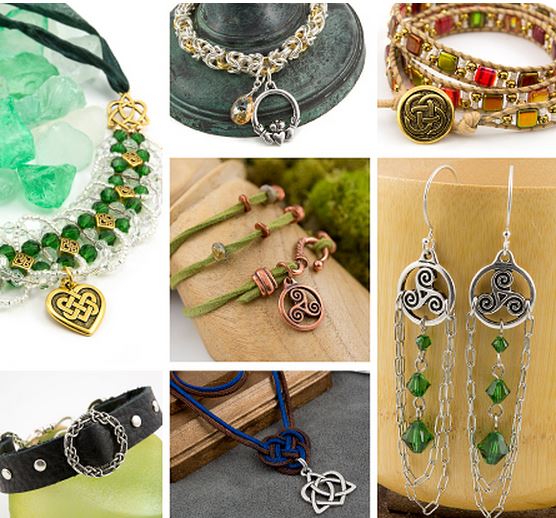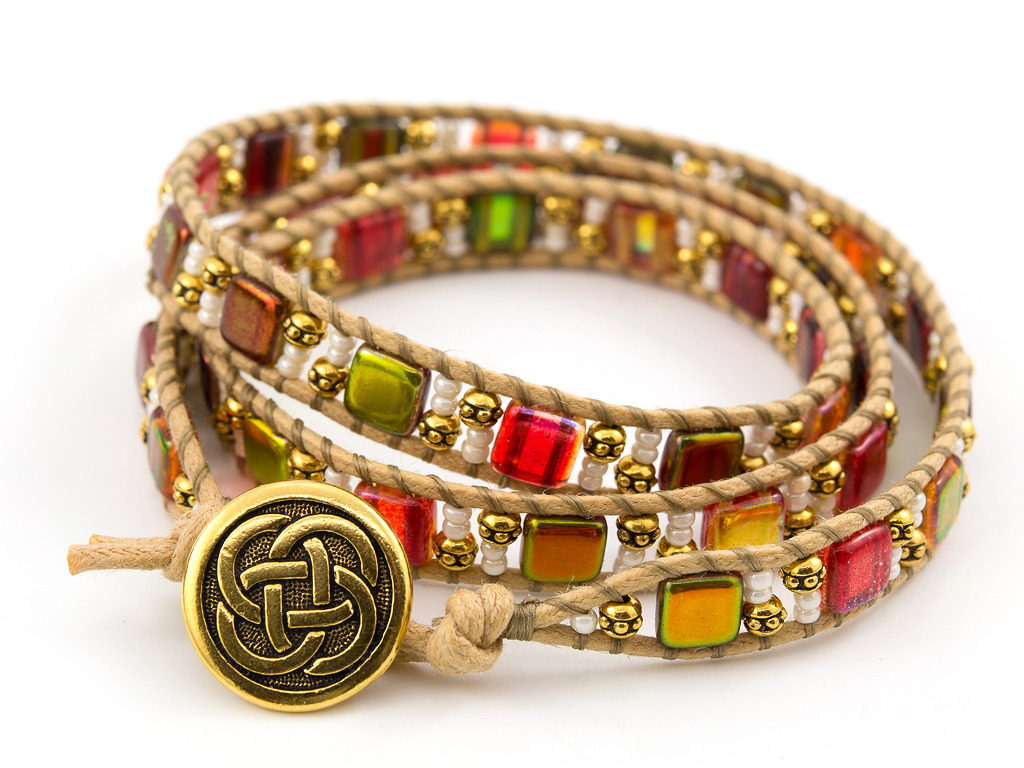I was suitably impressed when I received samples of TierraCast's new Celtic collection for review recently. The quality of these pewter components in 3 different plating finishes (silver antique, gold antique and copper antique) was excellent. Crisp casting with smooth finishing and perfectly sized for jewelry making. These are also lead free. (Note : lower grades of pewter can sometimes contain lead so it is important to source pewter carefully).
 |
| TierraCast's Celtic Collection : Pendants, charms, clasps and buttons |
The components apparently take them back to their roots as TierraCast's first ever products were their Celtic ones. As you can see from their inspirational designs, the components are beautiful in jewelry designs.
 |
| TierraCast's Celtic Collection Design Ideas |
I also liked their choice of traditional Celtic motifs. The interlaced and never ending knots dominate Celtic art and architectural features. Such patterns were first seen in Ancient Roman mosaics and were also found in other places.
The components below are great examples of
Celtic plait work ( a woven, unbroken cord design) which actually predates the knots. These motifs are again not historically exclusive to Celtic art but are most commonly associated to it.
My favorite from the collection are the
triskele or triskelion designs. Today we assume it is a Celtic symbol but its use actually goes further back before Celtic cultural influences arrived in Ireland - way back to the
Neolithic or New Stone Age era (c. 10,000- 2,000 BC).
The motif can be seen carved on a rock outside an amazing burial site in Ireland called NewGrange built more than 5000 years ago. This design probably symbolized the sun, afterlife and reincarnation. NewGrange predates Stonehenge by 1000 years!
Check out my past post to see pictures of NewGrange and a video which shows how the tomb "magically" captures sunrise on the shortest day of the year.
The collection also features lovely components inspired by Claddagh rings. The first Claddagh rings were first produced in the 17th century. The designs and customs were associated with the tiny fishing village of Claddagh in Galway. The hands represent friendship, the heart for love and the crown for loyalty.
"Claddagh rings are often used as friendship rings but are most commonly used as engagement/wedding rings. Mothers also give these rings to daughters when they come of age. When the hands that hold the heart are angled towards the girl, that means she is taken, when the heart faces out, the girl is single. This has become common largely due to the sentimental motto: "This is my heart which I give to you crowned with my love." (Source)
Claddagh rings are variations of European "fede" rings which date back to Ancient Rome. Rings with clasping hands were used as symbols of pledged vows and later in Medieval and Renaissance Europe they were used as engagement/wedding rings.
 |
| Tierra Cast Celtic Collection Necklace Inspiration |
 |
| TierraCast Wrap Bracelet Inspiration |
Disclosure
Before You Go:
______________________________
Original Post by
THE BEADING GEM
Jewelry Making Tips -
Jewelry Business Tips
